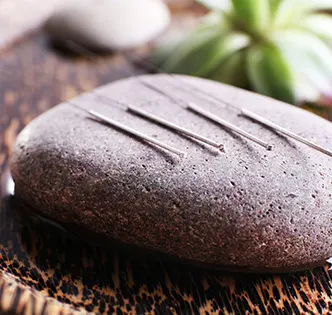

Cupping and Scraping are both traditional therapies rooted in Chinese medicine, offering deep historical and cultural significance.
Cupping involves placing glass, bamboo, or plastic cups on the skin’s surface to create a vacuum, promoting local blood circulation and lymphatic drainage. This method helps alleviate muscle pain, improve immune function, and is widely used in sports recovery and health maintenance.
Scraping uses specialized tools such as buffalo horns, jade stones, or modern scraping boards. After applying oil to the skin, therapists scrape the surface with these tools to stimulate blood flow and lymphatic movement. It’s effective for reducing pain, inflammation, and enhancing skin texture and appearance. scrapingis commonly used for muscle soreness, arthritis, and overall health improvement.
Both therapies have gained global recognition beyond Asia, reflecting their efficacy and alignment with traditional Chinese concepts of promoting Qi and blood circulation for balance and health. They provide diverse options and complementary approaches in modern healthcare.
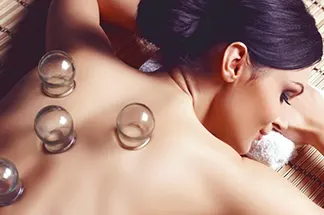
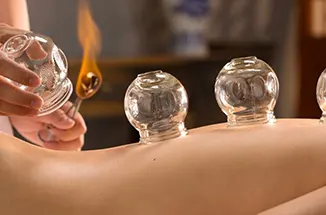
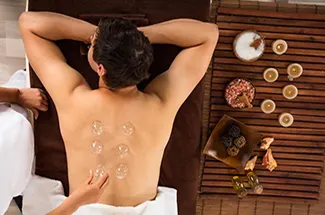
Dry Cupping
Creating a vacuum inside glass or bamboo cups and quickly placing them on the skin to promote blood circulation and lymphatic flow.
Fire Cupping
Heating the air inside cups with a flame and swiftly placing them on the skin to create a vacuum effect, similar to dry cupping but faster and more intense.
Moving Cupping
Applying oil to the skin and moving cups along specific meridians or areas to enhance blood circulation and lymphatic drainage.
The characteristics of scraping and cupping
- Promotes Blood Circulation and Lymphatic Drainage: Creates a vacuum to enhance blood flow and lymphatic drainage, aiding in detoxification.
- Relieves Muscle Pain and Tension: Reduces muscle inflammation and soreness, promoting muscle relaxation and post-exercise recovery.
- Boosts Immune Function: Improves immune response by stimulating circulation and lymphatic flow.
- Alleviates Stress and Anxiety: Helps reduce stress and anxiety by promoting relaxation of the nervous system and improving blood flow.
- Improves Skin Health: Enhances nutrient supply and metabolism in the skin, improving complexion and texture.
- Cost-effective and Easy to Use: Simple equipment, low cost, and straightforward application make it suitable for home self-care.
- Rich Cultural and Historical Significance: Part of traditional Chinese medicine with a long history and cultural significance, widely practiced and inherited.
- Versatile for Various Health Issues: Besides muscle and joint problems, cupping is used for respiratory ailments, digestive issues, and gynecological disorders.
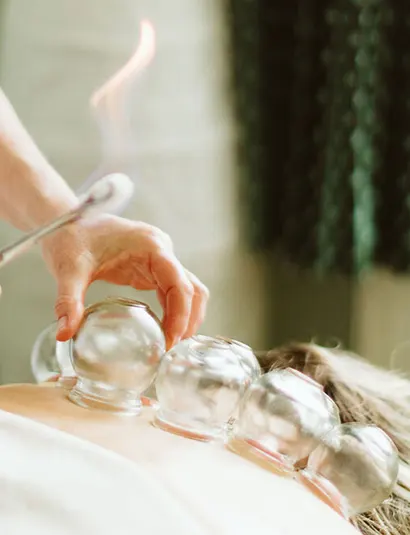
Scraping and cupping are traditional therapies that enhance circulation and promote healing through skin stimulation and suction therapy, respectively.



The characteristics of Scraping
Scraping is a traditional Chinese therapy that involves scraping the skin to promote blood circulation and qi flow, which helps alleviate pain, improve skin texture, and enhance immune function.
The characteristics of Cupping
Cupping is characterized by creating a vacuum on the skin’s surface using glass or bamboo cups, promoting blood circulation, lymphatic drainage, and easing muscle tension, thereby enhancing overall immune function and aiding in detoxification.
Is it a safe treatment?
Scraping and Cupping treatments are generally safe when conducted by trained and experienced healthcare professionals, ensuring minimal risk of complications or adverse reactions.
When do you apply this therapy?
These treatments are tailored based on individual health conditions and therapeutic goals, typically administered by trained healthcare providers.
Which tools are used to deal with the body in this treatment?
- Cupping tools: Typically involve glass cups, bamboo cups, or plastic cups, along with methods to create negative pressure (such as fire cupping or mechanical suction devices).
- Gua Sha tools: Commonly include horn tools (like buffalo horns), jade stones or copper plates traditionally, and modern-designed scraping boards, with shapes and materials varying based on region and treatment purposes.
